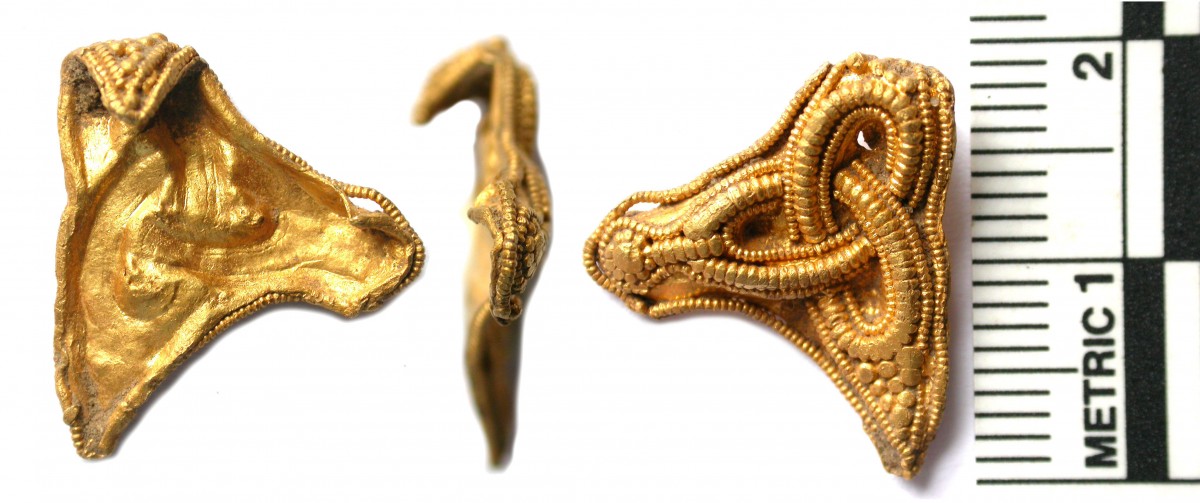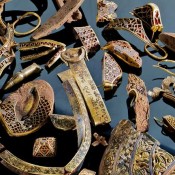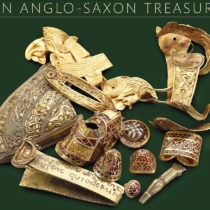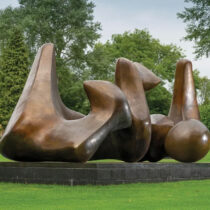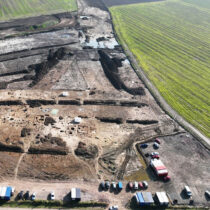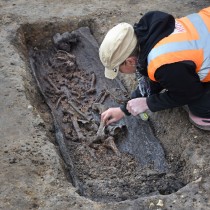A part of a gold artefact, probably of Early Medieval origin, was found in Norfolk field. The item, a fragment of a larger piece, could have been part of a sword grip.
The item dates back to the late 6th or 7th century, but since it bears no perforations for attachment, its actual context is not clear. No evidence of dwellings has ever been found in the village where the artefact was found.
The item is now under evaluation by the Portable Antiquities Scheme. It is a sligtly bent gold mount, rather flat and sub-triangular in shape. It has two concave sides. The two lower corners are pointed and the upper corner is rounded. It comprises a sheet of gold foil edged with fine gold beaded wire and decorated on the front with an interlacing filigree design. The central part of the design is a three-lobed knot executed in gold beaded wire. The lower corners of the triangle, beyond the end of the knot itself, are filled with gold pellets. Another strand of thicker beaded wire bisects the upper lobe of the knot and extends vertically upwards towards the rounded apex of the triangle where it terminates in a large gold pellet surrounded by a border of smaller pellets. The whole design is enclosed within a border of finer beaded wire. The reverse of the mount is undecorated.
Dr Andrew Rogerson, county archaeologist at the Historic Environment Service in Gressenhall, said that the item was of a high-status and may have come from a sword clasp. However, it is out of context and its precise function is a mystery.
He also said the item is like pieces found at the Staffordshire Hoard, so if there is an actual connection, this will offer archaeologists one more piece of evidence towards learning more about land use in the area and possible settlements across East Anglia.
The item was discovered by Barrie Plasom, 70, last year, during a charity search aimed at raising money from any finds for the East Anglian Air Ambulance.
The Norfolk coroner will hold an inquest in March to decide if it should be recorded as a treasure find.
